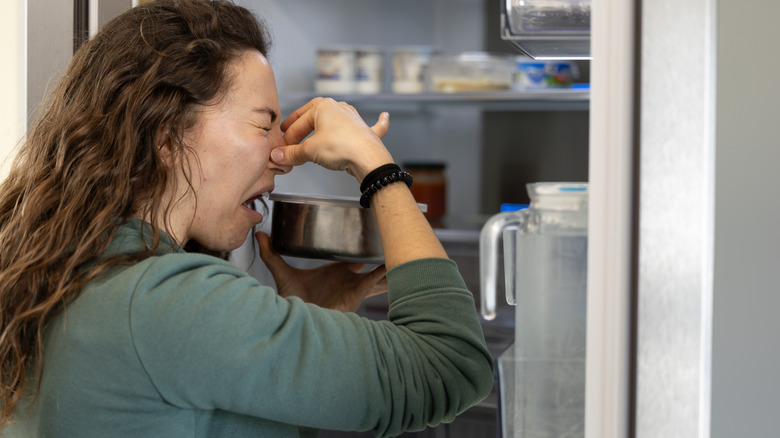Why Your Chicken Has Brown Stuff Inside Of It
I ate green potatoes for longer than I'd like to admit. The bright green tinge always seemed harmless. But I stopped once I learned that green potatoes contain solanine, a mild — but potentially dangerous — toxin. It's one of those food safety warning signs that seem benign but could leave you bedridden for days. It's always smart to double-check before eating food with abnormalities. But sometimes, eyebrow-raising food features are fine. Those reddish-brown spots you sometimes see on chicken? Nothing to worry about.
According to the USDA, dark spots typically come from bone marrow. Marrow is harmless, but it can look unappetizing. Experts are divided on whether or not it affects taste or texture, and variables like storage and cooking methods could have an impact, too.
You'll typically find dark spots in broiler-fryers, AKA young chickens slaughtered at around seven weeks old. Younger chickens haven't had time to develop tough, calcified bones, so the dark-colored bone marrow can soak through. Freezing and thawing the meat can make the marrow spread. To minimize browning, you can pre-cook the meat before freezing it — though be prepared to see the spots turn darker. Check the meat with a thermometer before taking it off the heat. You should never assume that chicken is done based on color alone. If you see dark spots on boneless chicken, blame ruptured blood vessels. The slaughtering process aims to minimize blood spots, but accidents happen. They, too, are harmless.
Discoloration to watch out for
Normal, healthy chicken meat comes in a wide range of colors, from bluish white to bright pink. Yellowish chicken is typically fine, too. The breed of the bird, its age, and its feed all impact the color of the meat. It's also normal for the meat to change color over time. As long as you've stored your meat properly, it's not automatically a red flag.
But color can still serve as a sign that something is wrong, especially if you see major color changes or notice a grayish tone. Check for other signs of spoilage, too, like unpleasant odors or slimy, sticky textures. And yes, you should throw away any meat that's growing mold. Otherwise, stick to standard chicken safety protocols. Don't keep raw chicken in the fridge for longer than a day or two, wash your hands before and after handling meat, and keep raw chicken away from other foods to avoid cross-contamination. By keeping an eye out for more risky changes in color, you can enjoy your chicken's natural, healthy hue — even if parts of it are brown.

